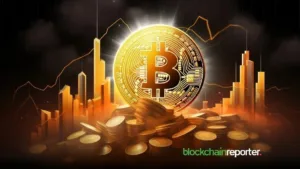A distributed ledger system. A sequence of blocks, or units of digital information, stored consecutively in a public database. The basis for cryptocurrencies.
Blockchains are made up of a series of individual blocks. Each block contains information about transactions conducted within a given time period. They also contain a unique identifier to differentiate them from every other block in the chain. Blocks are created by solving cryptographic problems. The process of solving these problems is known as mining. Mining a block on the blockchain attracts a reward. For example, at the inception of the Bitcoin blockchain, miners solving the cryptographic hashing problem required to add a new block to the blockchain were rewarded with 50 BTC. Blockchains are decentralized records. Instead of being stored in one central location, the blockchain is stored on the computers of every user of that given blockchain.
Meanwhile, the unique block identifier — known as the hash — is derived from the information contained in every previous block in the blockchain. This means that, in order to falsify any record on the blockchain, a nefarious actor would have to change every block on every instance of the blockchain. As a result, blockchains are considered to be virtually unfalsifiable and are thought of as immutable records of transactions. Today, most blockchains are public. This includes prominent cryptocurrencies such as Bitcoin and Ethereum. Anybody can view records of transactions conducted on a given blockchain, using a tool called a block explorer. Theoretically, however, blockchains afford a high level of anonymity to users.
While public blockchains are the norm, private versions are also being explored as a solution for many business and government use cases.



